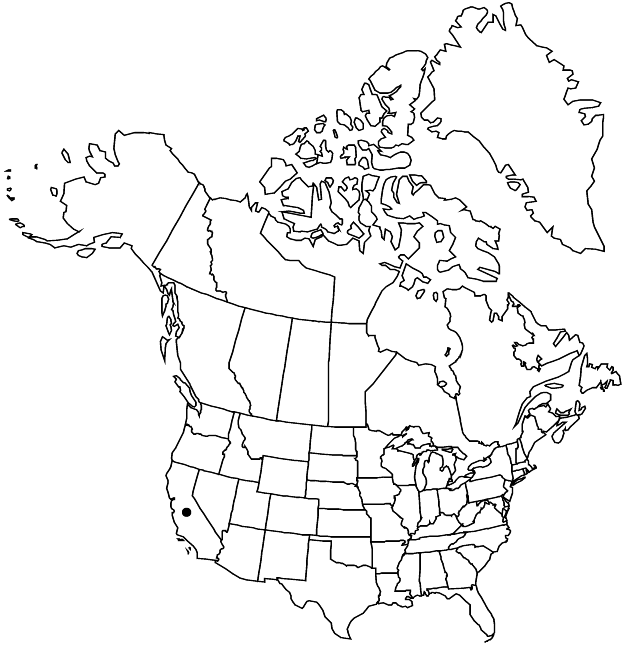Eriogonum kelloggii
Proc. Amer. Acad. Arts 8: 293. 1870.
Herbs, spreading, loosely cespitose, probably polygamodioecious, 0.5–1 × 1–5 dm, tomen-tose to sericeous. Stems: caudex spreading; aerial flowering stems weakly erect, slender, solid, not fistulose, arising at nodes of caudex branches and at distal nodes of short, nonflowering aerial branches, (0.4–)0.5–0.8 dm, tomentose to sericeous, with a whorl of 2–4, leaflike bracts ca. midlength, these similar to leaf blades, 0.3–0.8 × 0.1–0.25 cm. Leaves in tight basal rosettes; petiole 0.05–0.2 cm, silky-tomentose; blade oblanceolate to narrowly spatulate, 0.4–1 × 0.1–0.3(–0.4) cm, silky-tomentose and silvery abaxially, less so and greenish adaxially, margins entire, plane. Inflorescences capitate, 0.5–1.5 cm wide; branches absent; bracts absent immediately below involucre. Involucres 1 per node, turbinate, (4–)5–6 × 2.5–4 mm; teeth 6–8, erect, 0.5–1 mm. Flowers 5–7 mm, including 0.5–0.8(–1) mm stipelike base; perianth whitish to pinkish or rose-red, glabrous; tepals monomorphic, obovate; stamens exserted, 4–5 mm; filaments pilose proximally. Achenes light brown, 4–5 mm, glabrous except for sparsely pubescent beak.
Phenology: Flowering May–Aug.
Habitat: Heavy clayey soils, montane conifer woodlands
Elevation: 1000-1200 m
Distribution

Calif.
Discussion
Of conservation concern.
Eriogonum kelloggii is known from only five occurrences on Red Mountain, Mendocino County. It is listed as endangered by the state of California, and the Bureau of Land Management considers it a species of “special” status. It is also a candidate for federal endangered status, U.S. Fish and Wildlife Service.
A long sought, undescribed Eriogonum from Black Butte in Glenn County remains to be rediscovered. J. T. Howell (19120, CAS) made a single specimen of it from a single mat that he saw in 1943. The leaf blades are small (3–4 × 1.5–2 mm) and held on a short petiole (1–2 mm). Based on the vegetative features, that plant appears to be related to E. kelloggii.
Selected References
None.